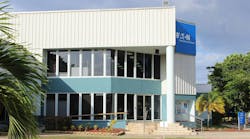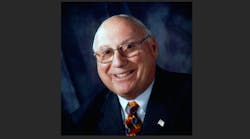Hubbell's recent announcement that it will work with German lighting components supplier Hella to adapt that company's automotive LED lighting to “non-automotive” applications is the latest example of a lighting fixture manufacturer signing a technology-sharing agreement with a LED manufacturer from far outside the traditional lighting market so it can sell a total lighting solution.
Hella does approximately $5 billion globally in automotive lighting for aftermarket and OEM applications. Of even more interest to lighting folks are its LED-powered roadway fixtures that started lighting European streets in 2009. The company wants to expand from this base into other markets, and it sees major opportunities in the United States, where it's estimated that 34 million streetlights now light U.S. streets and highways. In announcing the partnership, Steve Lietaert, vice president of program management for Hella Electronics Corp. said, “We see tremendous growth opportunities for LED lighting in North America. LED technology offers an energy-efficient, low-maintenance alternative to conventional lighting.”
A press release announcing the partnership said it's a “traditional cross-branding relationship” in which Hella designs, develops and manufactures the light module or “engine,” while Hubbell Lighting markets and distributes the lighting fixture into municipal markets. The commercial LED light engine is designed for installation into existing cobrahead-style roadway fixtures. The LED light engine will be manufactured at Hella's facilities in Flora, Ill.
Some of Hubbell Lighting's competitors have also signed strategic alliances, made outright acquisitions, or blended both strategies to get access to LEDs. To date, Royal American Philips Electronics, Netherlands, the parent company of Phillips Lighting has spent the most to acquire LED technology. It spent more than $2.3 billion on the following deals: the 2005 acquisition of Lumileds, Palo Alto, Calif., ($950 million); its 2007 purchase of Color Kinetics, Boston ($688 million), and its 2006 purchase of Partners in Lighting, Belgium ($704 million).
Acuity Brands Inc., Atlanta, is bolstering its LED offering through technology-sharing agreements and acquisitions. Last year it acquired Renaissance Lighting, Herndon, Va., and over the past three years has signed technology agreements with Lighting Science Group Corp., Satellite Beach, Fla.; Samsung LED Co. of Korea; and Neonlite Electronic & Lighting (HK), Ltd., Hong Kong.
In the ancient times, lamps and lighting fixtures lived in two different worlds. The “Big Three” lamp manufacturers — GE, Philips and Sylvania — controlled most of the market for light bulbs and niche lamp specialists filled in the gaps in their lines and distribution. In the lighting fixture market, dozens of niche manufacturers competed with fixture giants like Lithonia (now Acuity Brands), Cooper Lighting, Lightolier, Hubbell Lighting, Genlyte, Thomas Industries and Progress Lighting. GE always had an outdoor lighting unit, but Sylvania wasn't really into lighting fixtures until this year with its rollout of LED fixtures at Lightfair. It was Philips Lighting that really shook up the status quo by acquiring Genlyte and other fixture companies in the late-2000s, and marketing a complete package of lamps, ballasts (through its acquisition of Advance Transformer) and lighting fixtures. But until then, East was East, West was West and the two markets really didn't overlap that much.
That whole order of things went kerplooey with the advent of LEDs and other solid-state lighting technologies and the potential they have to radically transform the lighting industry as we know it because of their game-breaking longevity, design flexibility and other benefits. The lighting market's potential has attracted a whole slew of new billion-dollar players, including Hella, Samsung, Sharp, Toshiba and Avnet, and who-knows-how-many smaller niche LED manufacturers. They might not have previously had much interest in the general lighting market, but in many cases they were already manufacturing gazillions of LEDs for other applications such as auto headlights, computer displays and cellphones. All they have to do is tweak their manufacturing lines and marketing strategies a bit to start pumping their LEDs straight into the lighting market.
It's a whole new ballgame in lighting, and the new players aren't shackled to old ideas about distribution strategies or product design. While many of the new LED players are focused on the retrofit market right now, down the road, expect to see some of that focus shift to LED/fixture packages. LEDs don't like to be cooped up in many conventional lighting fixtures (in particular downlights) because their electronics can overheat without proper ventilation, and many of today's lighting fixtures don't offer the optics that maximize the light LEDs emit.
On the distribution front, the new LED manufacturers don't care who used to pal around with whom, and they will market their LEDs through the channel or combination of channels that make the most marketing sense to them. For some LED manufacturers, distributors will be the strongest channel. But for others, distributors will get elbowed out of the distribution mix by lighting reps, direct and online strategies, ESCOs, Home Depot and Lowe's and other competitors they haven't met yet.
The return on investment that LEDs now offer doesn't yet pencil out very well when compared to the ROI of an entire generation of capable non-LED lighting solutions. But the ROI and lighting performance of LEDs will improve — and so will the opportunities to sell them.








